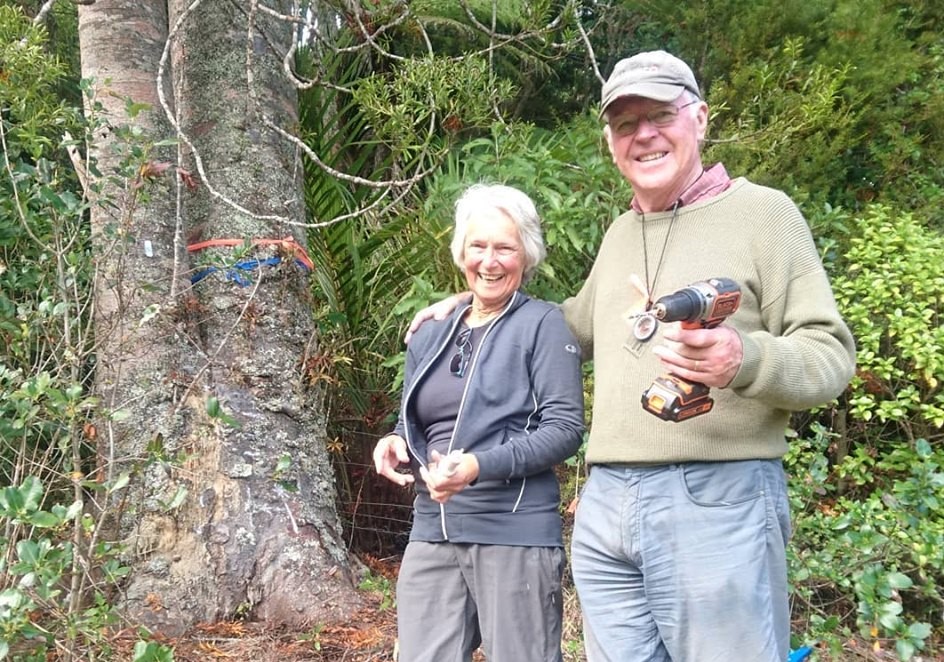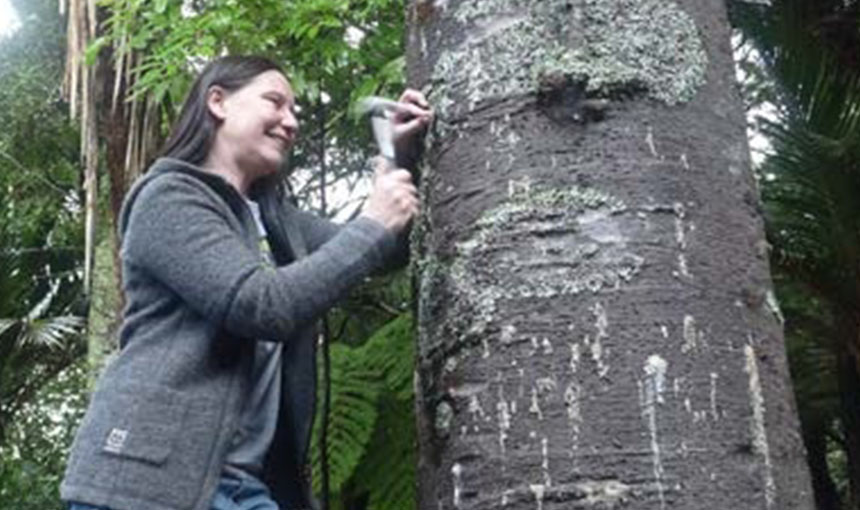Tiaki mō kauri: citizens combating kauri dieback
A community-led social science programme is bringing together researchers, communities and mana whenua (indigenous people) to help save Aotearoa New Zealand’s iconic kauri tree.

Led by Ian Horner of Plant & Food Research, Kauri Rescue is a collaboration that aims to broaden the suite of practical tools available to control kauri dieback.
It’s also providing information to landowners to help them treat their own trees and feed vital information back into the programme to help others.
Empowering New Zealanders to take action feeds into Biosecurity 2025’s strategic direction of creating a biosecurity team of 4.7 million people – the concept that everyone has a role to play in protecting our environment.
Kauri dieback is a disease that has killed hundreds, possibly thousands, of the taonga (treasured) trees in the North Island, and threatens the unique and ecologically important kauri ecosystem. New Zealanders have strong emotional and cultural attachments to kauri and the loss is having a major impact on our communities.
The Kauri Rescue team is actively connecting with community volunteers through mainstream and social media, a website, newsletters, workshops with landowners, and attendance at community events – empowering them to participate in trials of potential treatments for kauri dieback.
In doing so, the team is giving communities a sense of hope that they can do something positive to combat kauri dieback, and in turn raise wider awareness and understanding of the disease and its management.
This project contributes towards BioHeritage’s goal of empowering New Zealanders so they feel inspired to protect our environment.
Connect with the programme
Website: www.kaurirescue.org.nz
Facebook: www.facebook.com/kaurirescue
Twitter: www.twitter.com/KauriRescue
Instagram: www.instagram.com/kaurirescue
Issues & Impacts
However there are also opportunities to scope and test alternative practices, in particular Mātauranga Māori solutions, and this is being encouraged wherever possible.
Participants in the phosphite study are applying treatments under strict protocols, with information collected by the participants (citizen scientists) fed back into the programme. This enables researchers to collate and analyse information from multiple sites, speeding up the assessment of treatment effectiveness and possible side effects, and ultimately leading to more rapid roll-out of treatment tools.
By analysing the study results, along with the collaborative learning and community engagement processes, the programme could be adapted to become an exemplar for future public biosecurity or conservation initiatives.
Kauri Rescue was launched in Northland in October 2017, following a successful launch in West Auckland in February 2017, and contributes to the BioHeritage Challenge’s goal of future-proofing New Zealand’s biosecurity system from threats.
A multi-media approach
The multi-media approach being used by Kauri Rescue to raise awareness of the project is generating a significant amount of community interest:
- In late 2016/early 2017, more than 350 participants completed a community survey that measured public perceptions of kauri dieback control measures.
- A pilot group was trained in procedures to assess and treat the disease, and feedback from this group allowed refinement of protocols and instruction manuals for the wider community.
- More than 200 landowners have signed up for the project – almost 90% of these came directly through Kauri Rescue channels.
- Soil testing on about 130 properties has confirmed no kauri dieback disease on their land, and landowners have been given advice on general kauri health.
- More than 40 properties have tested positive for kauri dieback disease and most of these landowners have joined the programme, collected site and tree data, and treated their trees.
In March 2018, the team coordinated a collaborative learning workshop on a programme participant's property, helping her carry out the phosphite treatment and data collection for the last 100 kauri trees on her property.
Workshop participants, Kauri Rescue team members and pilot group members passed on their skills to new recruits, empowering them to have the confidence to treat their own trees.
Community feedback from the workshop has been incorporated into treatment protocols, an instruction manual and videos that show people how to apply phosphite treatment to infected kauri.
Research Partners
BioHeritage’s role is to break down barriers between organisations and individual scientists by coordinating and focusing the research of top scientists from our 18 Challenge Parties.
This project is being driven by Challenge Party Plant & Food Research which is working closely with Aranovus Ltd, The Tree Council, Wai Communications Ltd, biosecurity contractors, Auckland Council and Northland Regional Council.


